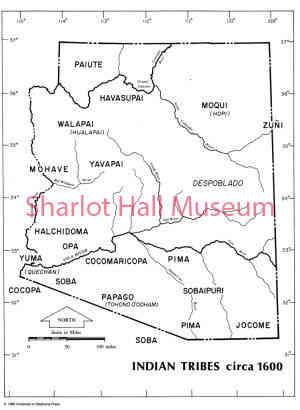By Dave Lewis
 The Grand Canyon (not to mention our own Granite Dells and Thumb Butte) used to be in New Mexico; much of New Mexico used to be in Texas; Texas used to be in Mexico. All of the above used to be part of Spain. And Arizona didn’t even exist until the 1860s.
The Grand Canyon (not to mention our own Granite Dells and Thumb Butte) used to be in New Mexico; much of New Mexico used to be in Texas; Texas used to be in Mexico. All of the above used to be part of Spain. And Arizona didn’t even exist until the 1860s.
Before all that bewildering geo-political change, going back ten or twelve thousand years -- possibly more -- it was home to some of the first Native people in the Americas who managed to get by just fine without boundaries on a map -- without maps at all, for that matter. Before that it was home to chuckwallas and camels, snakes and sloths, mice and mammoths, none of which cared about anything except eating and not being eaten and reproducing and sending their offspring into the world to do the same.
What we will be addressing in this and a series of occasional articles to follow is how Arizona came to be as we know it today. More importantly, we will talk about how we got to know Arizona:
-- through the mountain men, fur trappers and Indian traders who were among the first to traverse the land that became Arizona,
-- through the emigrants who followed a long and arduous southern route to California,
-- through the Army surveyors who labored to find the best route across Arizona, and who, along the way, took note of the terrain, the geology and the ecology, and who for better or worse (usually for worse) interacted with the Native people,
-- through the visionaries who saw what others might have missed -- the potential that this land might offer,
-- through the prospectors, settlers and politicians who influenced their future and our present.
We might consider why the Colorado River was the last significant river in the United States to be explored and mapped, why the Grand Canyon was so late in being explored, why it seemed so difficult for people to get Arizona figured out, and why the area that is now Prescott and its environs was off all of the beaten paths. (The Prescott area sort of has the distinction of being the last place to be explored in the last place to be explored.)
We might pause along the way to remind ourselves how Arizona got its name. Consider that we might be living in Prescott, “Arizuma,” or Prescott, “Pimeria.” (It probably wouldn’t be much different, but it does sound funny.)
This series of articles is not quite as ambitious as it might sound. It will touch only a little on the Spanish explorations or the work of Spanish missionaries. It will not cover the conflicts between settlers, explorers and soldiers and the Native people who were already here. It will just skim the Mexican-American War and the Civil War. It will not be even remotely a complete or comprehensive history of Arizona -- just a series of interesting seven-hundred-word glimpses into the past.
It will focus mostly on the era of United States explorations -- official and unofficial -- from the 1830s until the 1860s. Authors of articles in the series will do our best to identify good, reliable sources for readers who want to learn more. Our editors may decide to re-run some articles that have appeared previously in Days Past where needed to fill in gaps in the story.
Now, then, to set the context for what is to come. From 1540 up into the early 1800s, Spanish explorers, adventurers and priests had criss-crossed Arizona, north and south, east and west, in search of riches and souls to save in a new land claimed by Spain as its own. Fortune-hunters and explorers generally found little of interest. Priests and missionaries found varying degrees of success. They established temporary missions on the Hopi lands, and permanent settlements south of the Gila River, most notably at Tubac and Tucson, and there were a few settlers in the Yuma area to support emigrants crossing the Colorado River. Beyond that, Spain had relatively little involvement with this part of its newly-claimed lands. However, anyone who was interested in learning about the area could find a wealth of information among the maps, journals and chronicles of the Spaniards.
Absent any significant Spanish presence, Native people remained free to roam their homelands and to hunt, gather and farm as they had for countless generations.
All this will change as this series of articles unfolds.
Using the Grand Canyon as a point of reference: it was in “New Spain” until 1821. It will move to Mexico, New Mexico and eventually to Arizona in subsequent articles.
“Days Past” is a collaborative project of the Sharlot Hall Museum and the Prescott Corral of Westerners International (www.prescottcorral.org). This and other Days Past articles are also available at www.sharlothallmuseum.org/library-archives/days-past. The public is encouraged to submit proposed articles to dayspastshmcourier@gmail.com. Please contact SHM Library & Archives reference desk at 928-277-2003, or via email at dayspastshmcourier@gmail.com for information.


